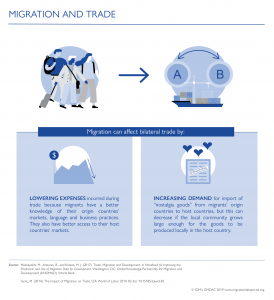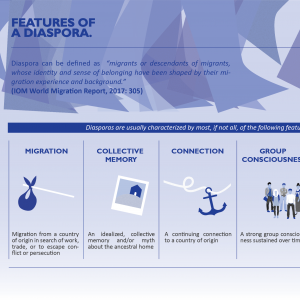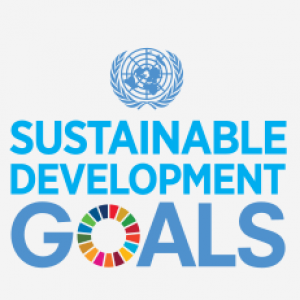The SDG Summit: time to act now
The SDG Summit in New York offered a unique opportunity to assess how far we have come in achieving the 2030 Agenda. Following two days of engaging discussions at the Summit, world leaders adopted a political declaration to renew their shared commitment to building a more equitable world for all, including migrants.
As we look back to 2015 when the Agenda was adopted, it becomes clear that we are behind schedule. The last years have been marked by multiple disruptions. The global pandemic, climate change and emerging conflicts have directly impacted global supply chains and cross-border mobility, putting a strain on available resources and reshaping cooperation among States and other partners.
So how can we leverage the benefits of migration to rescue the Agenda 2030? As data practitioners we have a role to play. From its inception, the Agenda’s SDGs have been the compass of our work at the International Organization for Migration (IOM) which has invested in a more streamlined institutional approach to data by setting up the Global Data Institute and uniting its two main data entities – the Global Migration Data Analysis Centre (GMDAC) and the Displacement Tracking Matrix (DTM) under one umbrella. Good migration governance is explicitly mentioned in Goal 10, which aims to reduce inequalities. As a cross-cutting issue, migration is also relevant for almost all other SDGs, including decent work, education, inclusion, and partnership. These interlinkages are explained in detail in IOM's flagship report released ahead of the Summit. The Global Migration Data Portal’s SDG section which we updated ahead of the Summit sheds further light on how to adjust SDG data collection to ensure migrants are included.
In collaboration with other UN and civil society partners, IOM acts as a co-custodian for reporting and setting standards on two specific SDG indicators: 10.7.2 and 10.7.3.
Indicator 10.7.2 monitors the number of countries with policies to facilitate orderly, safe, regular and responsible migration and mobility of people. The IOM Migration Governance Indicators (MGI) initiative provides valuable complementary insight in this regard. The MGI enables national and local governments to assess their existing policies, laws, and frameworks on migration to inform change. With more than 100 national governments and 70 local authorities, the programme has been rolled out in a wide range of contexts, making it particularly relevant to policy discussions on the humanitarian–development–peace nexus.
Indicator 10.7.3 on preserving human lives is based on evidence from the Missing Migrants Project, the only global dataset of deaths and disappearances along migration routes. Since its establishment in 2014, the project has recorded nearly 60,000 deaths worldwide, and as we inch closer to 2030, the trend is alarming. 2022 marked the deadliest year on record for migration in the Americas and on crossings such as the Horn of Africa to Yemen. The message is clear: as people continue to risk their lives on journeys through seas, deserts, and jungles, we must boost our ability to strengthen search and rescue capabilities and enhance the availability of regular and safe migration pathways.
The power of data to harness the promise of migration
To gauge our progress, we rely on data. However, data collection is not merely about numbers; it is about the real experiences of people on the ground. These experiences paint an ambivalent picture. On the one hand, research shows that migrants often face disparities in reaching certain SDGs. Global reports, for instance, reveal a growing concentration of multiple vulnerability factors, such as displacement, political instability, climate change and food insecurity. Understanding these connections is crucial for addressing global challenges collectively. The SDG Declaration explicitly calls for ensuring that migrants and displaced population groups are not forgotten.
At the same time, we must avoid seeing migrants merely from a vulnerability lens. Data also holds abundant evidence on the overwhelmingly positive role of migrants as contributors to sustainable development. Migration is not only a risk factor but also a powerful connector across societies and economies.
Diaspora communities are an empowering example. Beyond financial remittances, these communities build bridges across countries by transferring skills and knowledge. Governments are increasingly investing in policies and programmes that empower diasporas in their countries of origin and destination. The success of such policies and support measures, however, are dependent on better data. We need to go beyond counting remittances and improve our understanding of diaspora communities’ locations, skills, and aspirations.
A recent brief by the Global Data Institute looks at the state of evidence and provides a few recommendations for the way forward. Another recent IOM publication investigates existing legal mechanisms that facilitate transnational identity, which can foster diaspora participation, such as multiple nationalities, and facilitation of tax regimes between communities.
While remittances provide a significant financial contribution and we have global estimates on remittance flows, we must also measure the broader economic contribution of diasporas and migrants who also engage in investment, trade, and entrepreneurship. IOM is actively promoting a coherent approach to conducting diaspora mapping and measuring economic contributions of diaspora beyond remittances.
Time is ticking
We have seven years left till 2030. As we move forward, it is crucial to mobilize governments, partners, and the private sector. IOM’s flagship report for the SDG summit points to the six areas of acceleration. Data must be a foundation of all SDG work, helping us break goals into specific, achievable targets and addressing risks and opportunities in a balanced manner. The call for better data is further reinforced in UN 2.0 Policy Brief 11, where data is named one of the key quintets of change, together with innovation, strategic foresight, digital and behavioral science.
Investment in data does not mean capturing more data but working with data more efficiently. This means ensuring data disaggregation to see how migrants fare in the SDGs compared to other population groups. Disaggregation ensures that development initiatives are tailored to the needs of specific migrant groups. Furthermore, innovation in data collection, including the use of big data and social media, can provide a more timely and granular way of telling migrants' stories.
Migration is undeniably intertwined with all SDGs, impacting areas from governance to inclusion to humanitarian response to economic growth. To ensure we stay on course to achieve the 2030 Agenda, we must recognize migrants both in terms of their needs, but also as key agents for positive change.
With the right data, innovation, and collaboration, we can harness the potential of migration to build a more equitable and sustainable world for all. The journey ahead may be challenging, but it is one that we must undertake with dedication and resolve.
For more information on Migration Data and the SDGs, visit the Portal's SDG section here.









